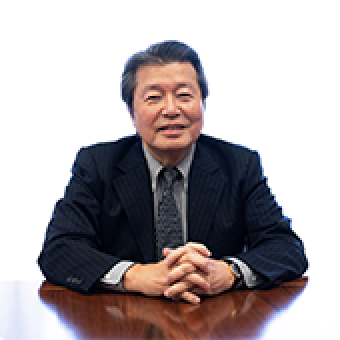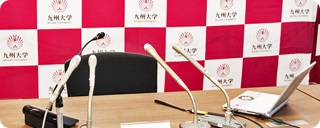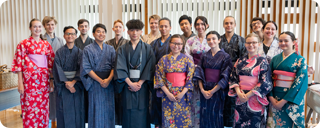トピックス Topics
Kyushu U and Sojitz conclude memorandum for implementation of membrane-based direct air capture technology and related technology solutions to capture carbon dioxide from the atmosphere
2022.02.09Topics
Kyushu University and Sojitz Corporation (“Sojitz”) have signed a memorandum for the practical implementation and commercialization of direct air capture (“DAC”) and related cutting-edge technologies for directly capturing carbon dioxide emissions from the atmosphere. Kyushu University and Sojitz seek to promote carbon neutral initiatives and provide solutions to social issues through the practical application of cutting-edge technologies towards the realization of a sustainable society.
- DAC is a technology that captures CO₂ directly from the atmosphere. Conventional DAC technology uses absorbent or adsorbent-based methods for capturing CO₂. However, this method consumes relatively high energy to release CO₂ from the absorbents and adsorbents by using heat or by being placed in a vacuum. This high amount of energy used in the process has been considered problematic. Additionally, installation sites for conventional DAC technology are limited due to numerous restrictions of DAC operation requirements.
- The International Institute for Carbon-Neutral Energy Research at Kyushu University (“I²CNER”) has engaged in R&D of the world’s first membrane-based DAC technology, which makes it possible to capture CO₂ through a membrane separation system. This new technology will greatly increase the number of possible locations for CO₂ capture equipment. In addition, since there is no need to release CO₂ from an adsorbent as in the conventional CO₂ absorption process, the energy required for the process can be significantly reduced.
- The recovered CO₂ can be used as a raw material for fuels and chemicals, as well as for cultivating vegetables and other crops and for beverages and dry ice. This membrane-based DAC technology will expand the range of applications for CO₂.
- Kyushu University aims to realize widespread global use of its membrane-based DAC technology and CO₂ conversion technology by 2050, and the university is currently involved in the development of a range of technologies for practical implementation.
- Kyushu University proposed to integrate its research plans for membrane-based DAC technology along with its CO₂ conversion research, and Kyushu University was selected for the Moonshot Research and Development Program promoted by the Cabinet Office of Japan, which advances ambitious R&D projects based on bold ideas anticipated to have a major impact if realized in a future society. Kyushu University has set its research goal to fully complete development of necessary devices for these technologies by 2030, with hopes to then complete mass production and move forward with implementation.
- Kyushu University and Sojitz were able to conclude this memorandum as part of the university’s current efforts to establish industry-academia collaborations with multiple companies in preparation for implementation.
- This memorandum is based on I²CNER’s world-leading knowledge of CO₂ capture, storage, and conversion for achieving carbon neutrality and carbon negativity, as well as Sojitz’s experience from its decarbonization initiatives. Sojitz and Kyushu University concluded this memorandum to pursue possible collaboration and joint cooperation for core technology to be implemented for realizing carbon neutrality and carbon negativity.
- After concluding this memorandum, Kyushu University and Sojitz will promote the R&D of DAC technology utilizing membrane separation based on this industry-academia partnership, hold discussions, and carry out activities with the aim of realizing commercialization.
[Outline of Memorandum]
1. Date signed: February 1, 2022
2. Theme: Business tie-up for implementation of DAC technology
3. Content:
(1) Purpose:
1) Exchange information on DAC technology and other cutting-edge technologies for capturing CO₂
2) Laying the groundwork for practical implementation and commercialization for
these technologies
(2) Period: February 1, 2022 – January 31, 2023
(3) Applicable research areas:
1. CO₂ separation and capture
2. CO₂ conversion and fixation
3. Social engineering
A new carbon recycling society extracting resources from the air































